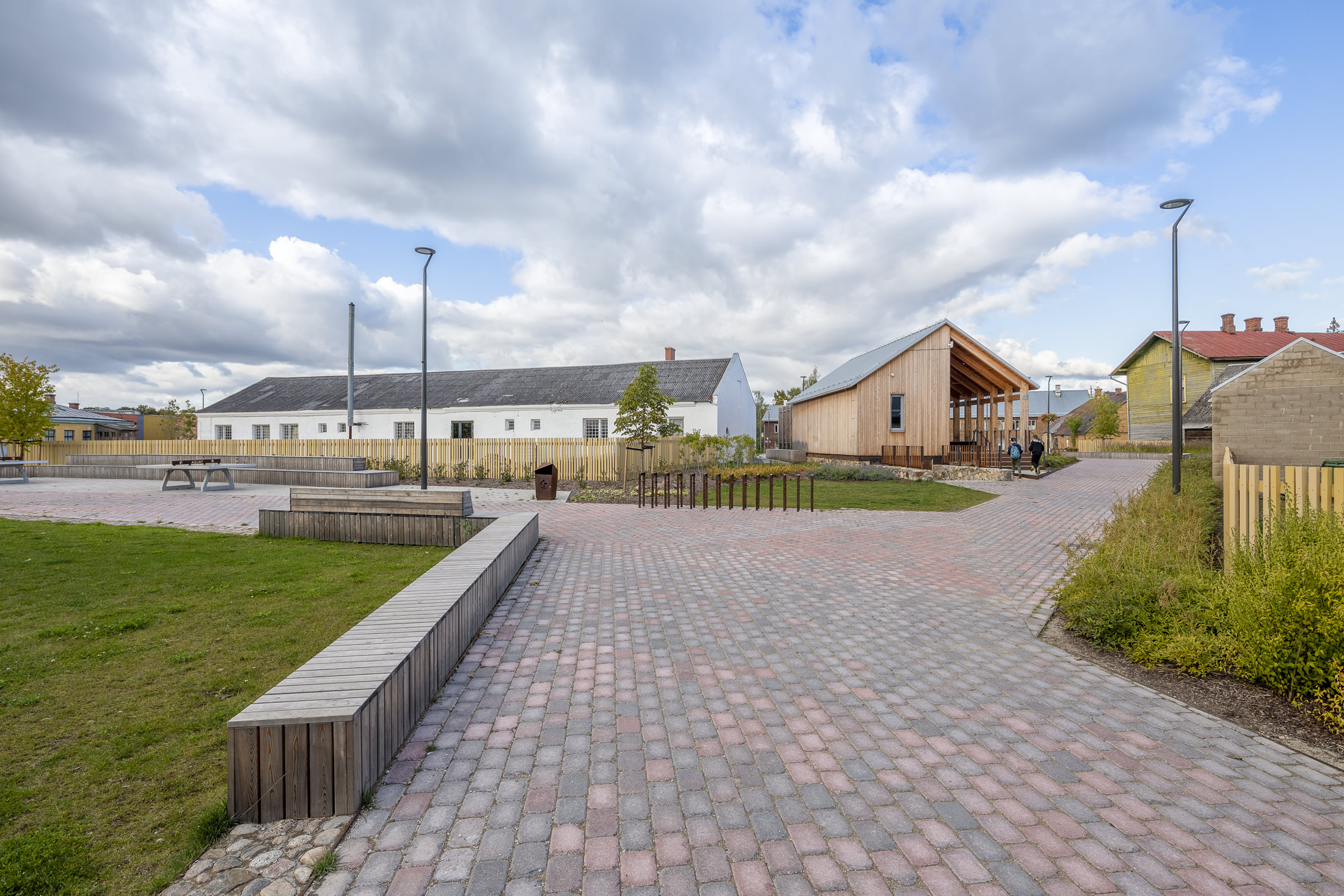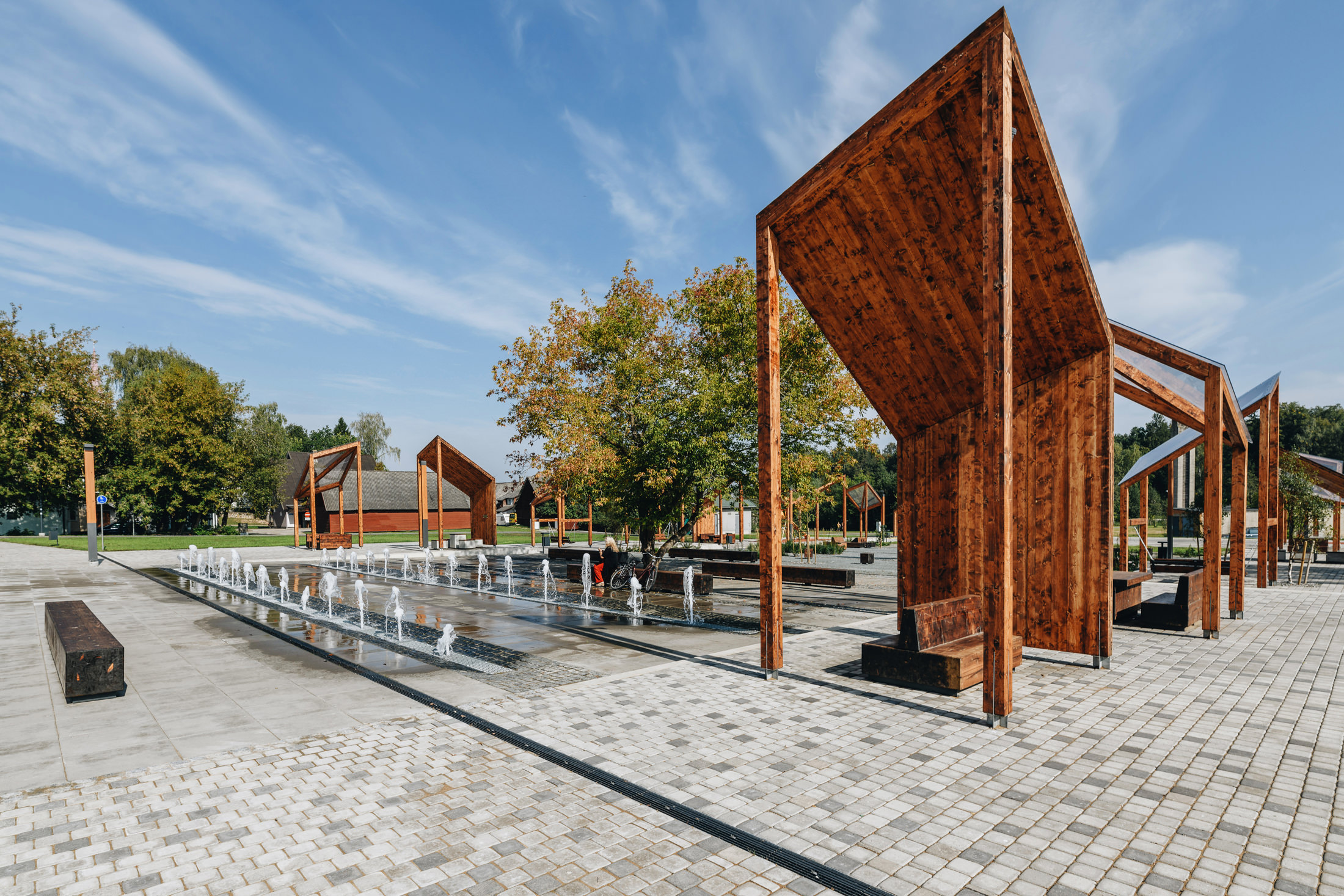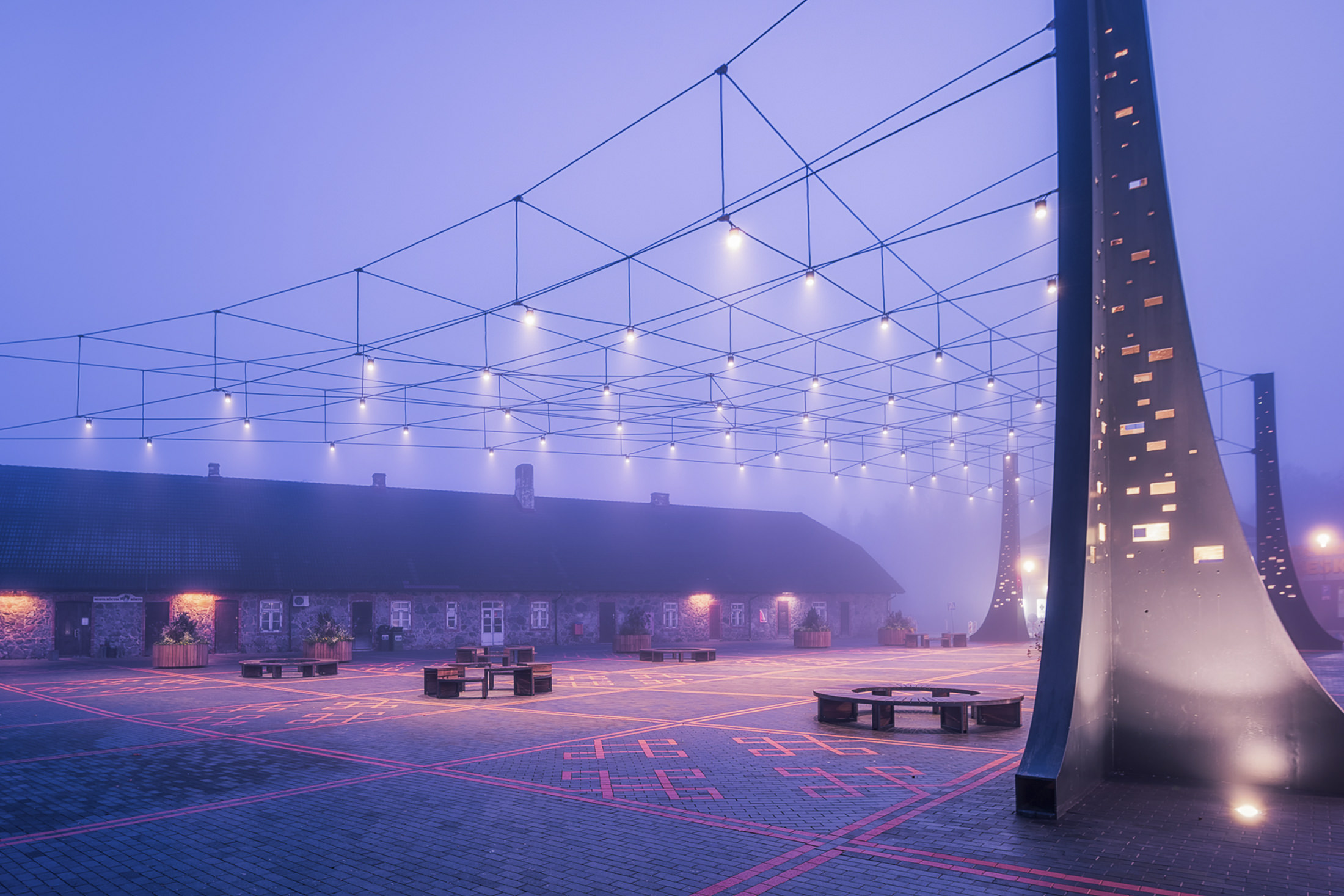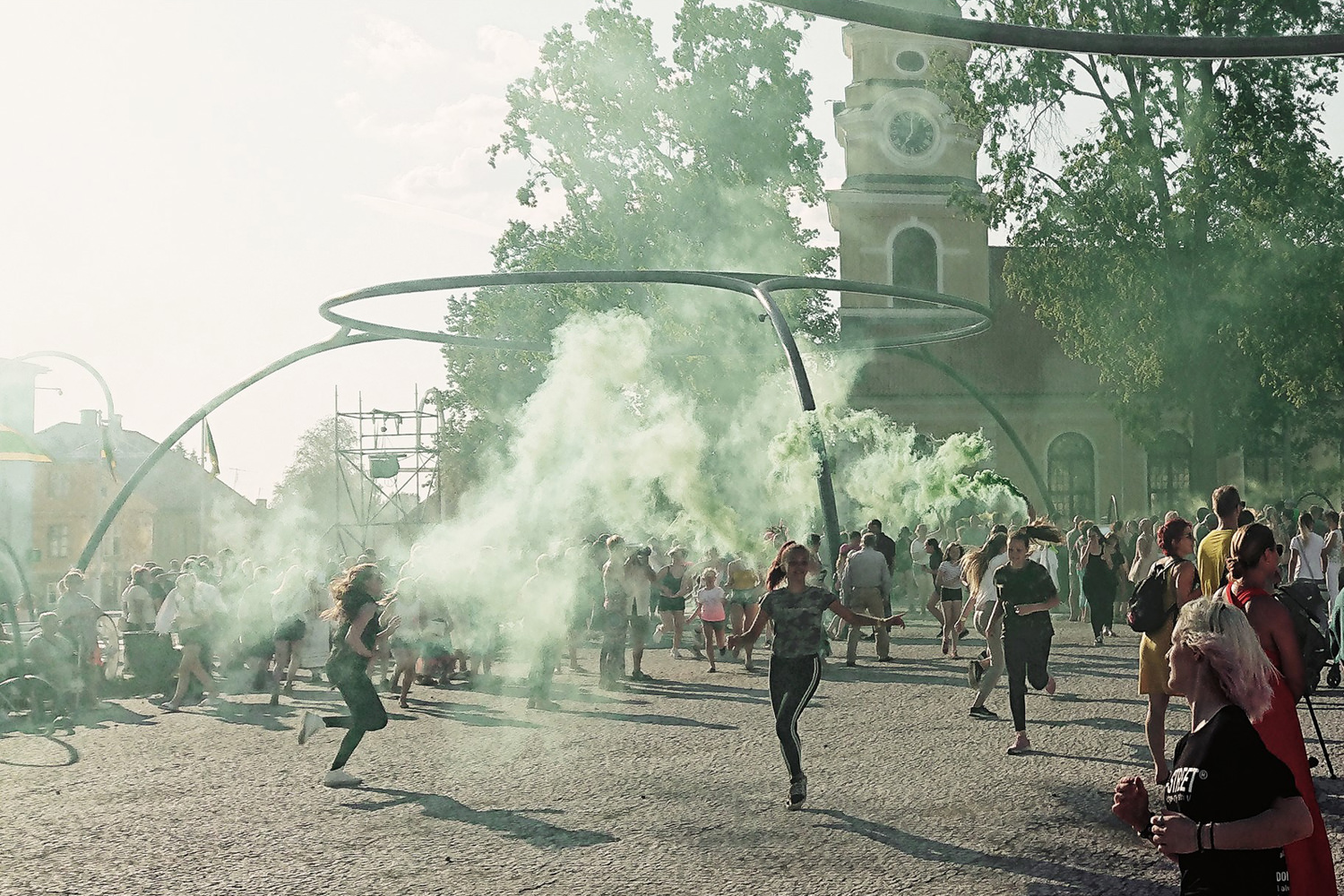
Arsenale 22.05.21- 21.11.21
Square!
positively
shrinking
urban regeneration tools for shrinking communities
Participants: Mari Rass, Ott Alver, Alvin Järving, Kaidi Põder (Tõrva main square project), Helen Rebane, Egon Metusala, Kaie Kuldkepp, Liis Uustal, Vilve Enno (Põlva main square project), Gianfranco Franchi, Chiara Tesi, Rea Sepping (Valga main square project); Siiri Vallner, Indrek Peil (Rapla main square project), Villem Tomiste (Võru main square project); Häli-Ann Tooms, Mari-Liis Männik (Kuressaare main square and street project); Ülle Maiste, Diana Taalfeld, Anne Saarniit, Roomet Helbre, Taavi Kuningas (Elva main square and street project); Risto Parve, Kai Süda (Rakvere main street project), Liisa Hirsch, Patrick Tubin McGinley (music, sound); Anna Hints, Joosep Matjus, Ants Tammik, Tushar Prakash, Urmas Reisberg, Kairid Laks (film)
Photographs in the Main Catalogue: Tõnu Tunnel, Tiit Veermäe, Siim Solman
Graphic Design: Martin Pedanik (Labor)

Commissioner: Raul Järg (Estonian Centre for Architecture)
Producers: Eve Arpo, Maria Kristiin Peterson (Estonian Centre for Architecture)
Collaborators: Mint LIST, Silvia Pärmann
With the support of: Estonian Ministry of Culture, Estonian Ministry of Finance, Cultural Endowment of Estonia, Rakvere City Government, Rapla Municipality Government, Võru City Government, Valga Municipality Government, Elva Municipality Government, Põlva Municipality Government, Saaremaa Municipality Government, Tõrva Municipality Government, Baltic Culture Fund
Press release /
text and photos
Contact
The exposition explores the urban regeneration tools for shrinking communities.
The exhibition analyses the economic change and demographic processes in comparison with European countries, explains the impact of urban shrinkage on urban space and suggests measures to help the local government to adapt to the shrinking process. The analysis is visualised in the form of texts and graphs mounted on one of the exhibition hall walls.
EV100 architecture programme “Great Public Spaces” is visualised on the four smaller screens on either side wall. Screens are featuring photos taken by the local people of the eight completed town squares and main streets, professional photos, a plan of the build-up squares and the names of the authors.
The most eye-catching object of the exposition is the large screen on the back wall featuring a short film of the demolition of an abandoned apartment building from the czarist era in Valga. The audience is encouraged to shape their personal opinion on the demolition. The film is directed by Anna Hints and the original score written by composer Liisa Hirsch.
The exhibition “Square! positively shrinking” explores the role of high-quality urban space in enhancing the future development perspective of depopulating small towns. It features activities to improve the urban environment with a focus on the redevelopment of central squares within the “Great Public Spaces” programme.
The phenomenon of shrinking cities is widespread across Europe and as a result of fundamental changes of the transition in 1989/1991, post-socialist Eastern Europe is even more affected. The influence of urbanisation and sub-urbanisation processes in the countries on local communities is often stronger than that of out-migration or low birth-rates on the state level. As a result, communities are losing population at a varying pace depending on their size and location. Altogether 45 Estonian towns out of 47 have lost some of their population since 2000.
The most visible symptoms of shrinkage in urban space are building vacancies and urban brownfields, the predominantly low quality of residential premises, visually unattractive unrenovated buildings and underinvested environment. An urban space with abandoned and underused buildings has a negative effect on the attitude of residents towards their home. They may lose pride in and place loyalty to their town and this, in turn, leads to a lack of initiative to improve it.
Shrinking municipalities need to concentrate on the quality of life of their residents. The attractiveness of urban space is important to achieve this goal. Urban space interventions in shrinking communities consist of building demolitions, active housing policy, historic building restoration and urban space revitalisation. The exhibition “Square! positively shrinking” focuses on the first and last from those interventions – building demolition and urban space revitalisation.
The exhibition presents a short film of the demolition of a 120-year-old wooden apartment building in Valga town which had remained empty two decades ago. With demolitions, something always disappears for good. Particularly older buildings tend to carry a distinct historic, architectural, emotional etc. value and the decision to have them demolished should not be taken easily. But demolition is not only negative. For local inhabitants, the structure’s removal symbolized the beginning of a change – an action which can bring a better future. Therefore, demolitions should remain as one of the tools used by the local government to adapt the town to the needs of the actual population and to enhance the positive development of the entire town.
The programme “Great Public Spaces”, presented in the exhibition, is a remarkable example of urban space revitalization in shrinking urban areas. The aim of the programme was to renew the centres, main squares as well as the main streets in Estonian towns by 2020 as a gift from architects to the Republic of Estonia celebrating its 100th anniversary. The town squares in Tõrva, Põlva, Valga and Rapla were completed in 2018, in Võru and Kuressaare in 2019 and Elva and Rakvere in 2020.
None of the presented activities is able to change the future perspective of the shrinking towns alone and even together they compose only a part of the urban revitalization strategies to overcome the outcomes of population shrinkage. But they need to be addressed. The quality and attractiveness of urban space matters, especially in shrinking communities.

Publication
Square! Positively shrinking
The catalogue of Venice Architecture Biennale „Square! positively shrinking“ explores the role of high-quality urban space in enhancing the future development perspective of depopulating small towns. The articles in the catalogue investigate depopulation in both Estonian and European context and architectural means of reducing its negative effects. It also provides an overview of the main squares or streets of eight Estonian towns that were built in 2018-2020 as part of the program “Great Public Spaces”. Although the main purpose of the catalogue is to complement the Estonian exhibition in the 17th Venice Architecture Biennale, it could also serve as a guide and an inspiration to other municipalities in their own strategies of improving public space.
Publisher
Estonian Centre for Architecture
Compilation of the catalogue
Kalle Vellevoog, Jiří Tintěra, Garri Raagmaa
ISBN 978-9949-9968-3-4


